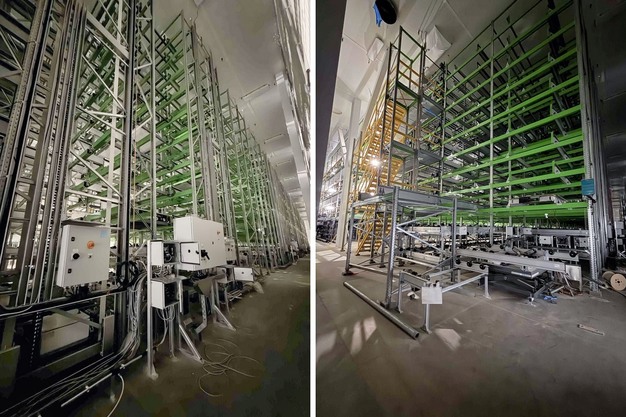TELUS & Welch’s Announce 10-Year Partnership to Advance Food Supply Chains – iGrow News

Report on the Strategic Partnership Between TELUS Agriculture & Consumer Goods and Welch’s
Advancing Sustainable Development Goals Through Supply Chain Innovation
A decade-long strategic partnership has been established between TELUS Agriculture & Consumer Goods and Welch’s to pioneer a new digital compliance and transparency platform. This initiative is fundamentally aligned with the United Nations Sustainable Development Goals (SDGs), aiming to create a more resilient, transparent, and sustainable global food system. The collaboration directly supports SDG 17 (Partnerships for the Goals) by leveraging joint expertise to address critical industry challenges.
Core Objectives and Alignment with Sustainable Development Goals
The primary goal of the partnership is to replace manual, inefficient processes with an automated, data-driven system. This technological advancement is designed to meet several key sustainability targets.
Fostering Responsible Consumption and Production (SDG 12)
The platform is engineered to significantly enhance supply chain accountability, a cornerstone of SDG 12. Key contributions include:
- Enhanced Traceability: The system will enable precise tracking of ingredients from farm to consumer, ensuring product quality and safety.
- Regulatory Compliance: Automated validation against a proprietary agricultural label database ensures adherence to diverse and evolving international standards, promoting responsible production practices.
- Supply Chain Transparency: Real-time monitoring provides unprecedented visibility into the supply chain, empowering stakeholders and consumers with verifiable information.
Promoting Industry, Innovation, and Infrastructure (SDG 9)
This initiative represents a significant investment in building resilient infrastructure and fostering innovation within the agricultural sector, directly addressing the aims of SDG 9.
- Digital Transformation: The deployment of a proprietary analytics engine and database moves the industry away from manual processes toward a more efficient and resilient digital infrastructure.
- Increased Resilience: By automating compliance, the platform strengthens the operational resilience of Welch’s and its network of growers against regulatory shifts and market demands.
- Scalable Innovation: The technology serves as a foundational upgrade that can be scaled across Welch’s global operations, setting a new standard for the industry.
Supporting Decent Work and Economic Growth (SDG 8)
The initiative will directly impact Welch’s network of over 700 grape growers, contributing to sustainable economic growth and productivity.
- Increased Productivity: Automation of compliance tasks frees up resources, allowing growers to focus on core agricultural activities and improve efficiency.
- Market Access: By ensuring compliance with global standards, the platform helps growers maintain and expand their access to over 40 international markets, securing their economic viability.
Implementation and Technological Framework
Phased Rollout and Global Scope
The implementation will be conducted in phases, beginning with the 700+ grape growers in Welch’s U.S. network. The system is designed for global applicability, positioning Welch’s to navigate complex regulatory landscapes as it expands its market presence. This structured rollout ensures that the foundation for sustainable practices is firmly established before scaling internationally.
Data-Driven Infrastructure
The platform’s effectiveness is rooted in the advanced technological assets provided by TELUS Agriculture & Consumer Goods. The core components include:
- A proprietary agricultural label database for real-time compliance checks.
- An advanced analytics engine for custom rules management and automated data validation.
- A framework for replacing manual procedures to increase accuracy and enable agile, data-informed decision-making.
Conclusion: A Replicable Model for Global Sustainability
The collaboration between TELUS Agriculture & Consumer Goods and Welch’s establishes a powerful blueprint for the food and beverage industry. By integrating technology to enhance transparency and compliance, the partnership provides a scalable model for advancing key Sustainable Development Goals. This initiative demonstrates a clear commitment to building a food system that is not only efficient and profitable but also environmentally responsible and socially equitable, directly contributing to:
- SDG 12: Responsible Consumption and Production
- SDG 9: Industry, Innovation, and Infrastructure
- SDG 8: Decent Work and Economic Growth
- SDG 2: Zero Hunger (through improved food quality and system resilience)
- SDG 17: Partnerships for the Goals
Analysis of Sustainable Development Goals (SDGs) in the Article
1. Which SDGs are addressed or connected to the issues highlighted in the article?
-
SDG 9: Industry, Innovation, and Infrastructure
- The article focuses on a technological partnership to build resilient infrastructure for the food industry. It highlights the development and deployment of a new “compliance platform” using “agricultural data technology” and a “proprietary agricultural database and analytics platform.” This directly relates to fostering innovation and upgrading industrial processes.
-
SDG 12: Responsible Consumption and Production
- The initiative is centered on enhancing “supply chain transparency,” “traceability,” and ensuring “product quality.” By automating compliance and accurately tracing ingredients, the partnership promotes sustainable and responsible production patterns. The article states the goal is to help the industry “trace ingredients more accurately” and “meet rising regulatory standards,” which are core components of responsible production.
-
SDG 17: Partnerships for the Goals
- The entire article is about a “decade-long partnership” between two private sector entities, TELUS Agriculture & Consumer Goods and Welch’s. This collaboration is designed to share technology and expertise to address industry-wide challenges, serving as a “framework for other companies” and a “model for industry-wide adoption.” This exemplifies a multi-stakeholder partnership to achieve sustainable development objectives.
2. What specific targets under those SDGs can be identified based on the article’s content?
-
Under SDG 9: Industry, Innovation, and Infrastructure
- Target 9.4: “By 2030, upgrade infrastructure and retrofit industries to make them sustainable, with increased resource-use efficiency and greater adoption of clean and environmentally sound technologies and industrial processes…” The article describes the implementation of a new technology platform to “streamline food production workflows” and replace “manual compliance procedures with automated systems,” which constitutes an upgrade of industrial processes for greater efficiency and resilience.
-
Under SDG 12: Responsible Consumption and Production
- Target 12.6: “Encourage companies, especially large and transnational companies, to adopt sustainable practices and to integrate sustainability information into their reporting cycle.” The partnership between TELUS and Welch’s, a large company with products in over 40 countries, is a direct example of adopting sustainable practices like “supply chain transparency” and “data-driven compliance.” The platform is designed to “increase accuracy in reporting.”
-
Under SDG 17: Partnerships for the Goals
- Target 17.17: “Encourage and promote effective public, public-private and civil society partnerships, building on the experience and resourcing strategies of partnerships.” The article details a significant private-private partnership between TELUS and Welch’s. This collaboration is explicitly positioned as a “global blueprint” and a “model for industry-wide adoption,” demonstrating how such partnerships can create scalable solutions.
3. Are there any indicators mentioned or implied in the article that can be used to measure progress towards the identified targets?
-
For Target 9.4 (Upgrade infrastructure and industries):
- An implied indicator is the scale of adoption of the new technology. The article mentions the phased rollout will begin with Welch’s network of “over 700 grape growers in the U.S.” Progress can be measured by the number or percentage of growers successfully integrated into the automated compliance platform.
-
For Target 12.6 (Encourage companies to adopt sustainable practices):
- The article mentions “real-time compliance tracking” and “supply chain transparency.” A direct indicator would be the percentage of Welch’s supply chain covered by this real-time monitoring system. Another indicator is the level of ingredient traceability achieved across its products, which are sold in “more than 40 countries.”
-
For Target 17.17 (Promote effective partnerships):
- The existence of the “10-year partnership” agreement itself serves as a primary indicator. Furthermore, the success of the partnership can be measured by its ability to serve as a “framework for other companies,” meaning an indicator would be the number of other food companies that adopt this or a similar compliance model based on the TELUS-Welch’s initiative.
4. Summary Table of SDGs, Targets, and Indicators
| SDGs | Targets | Indicators |
|---|---|---|
| SDG 9: Industry, Innovation, and Infrastructure | Target 9.4: Upgrade infrastructure and retrofit industries to make them sustainable and increase adoption of sound technologies. | Number of growers (over 700) integrated into the new automated compliance platform. |
| SDG 12: Responsible Consumption and Production | Target 12.6: Encourage companies to adopt sustainable practices and integrate sustainability information into their reporting. | Percentage of the supply chain with real-time compliance validation and ingredient traceability. |
| SDG 17: Partnerships for the Goals | Target 17.17: Encourage and promote effective public-private and civil society partnerships. | The establishment of the 10-year partnership agreement; Number of other companies adopting the compliance framework as a model. |
Source: igrownews.com

What is Your Reaction?
 Like
0
Like
0
 Dislike
0
Dislike
0
 Love
0
Love
0
 Funny
0
Funny
0
 Angry
0
Angry
0
 Sad
0
Sad
0
 Wow
0
Wow
0









































































